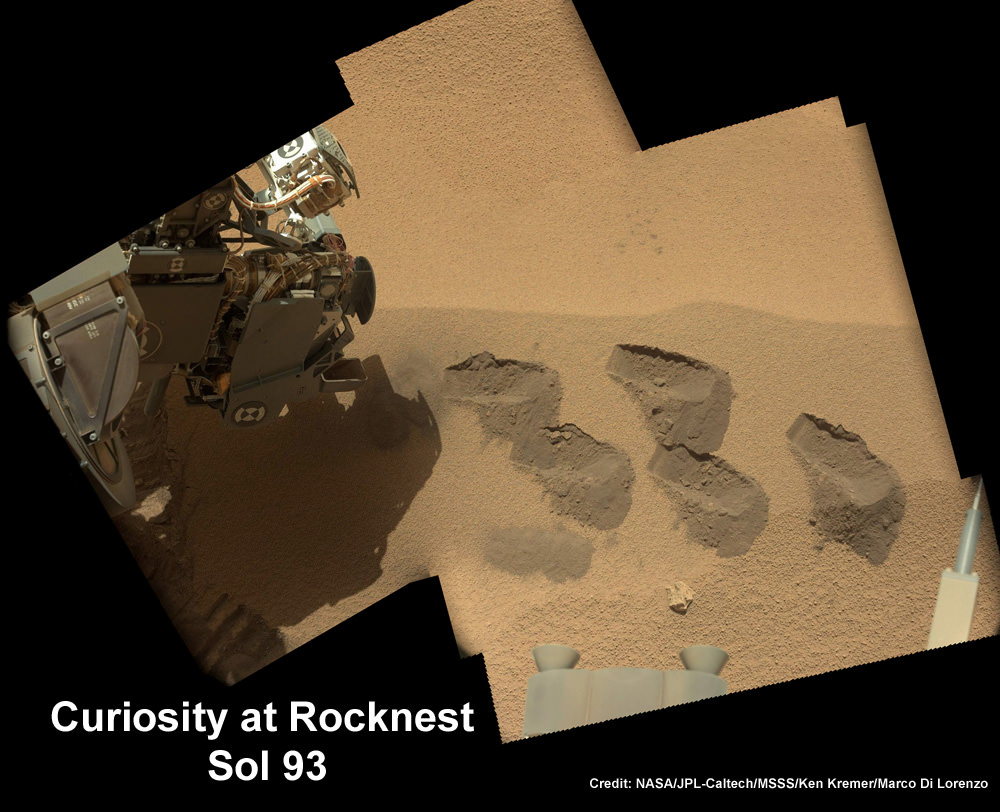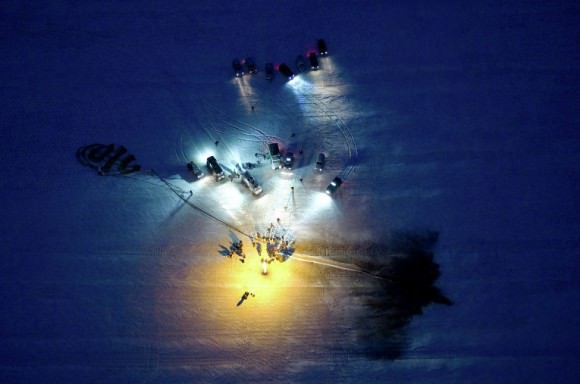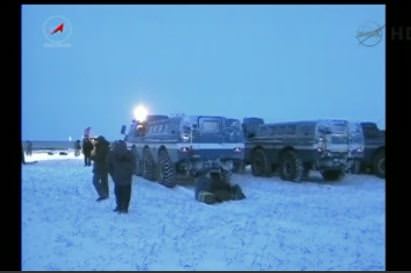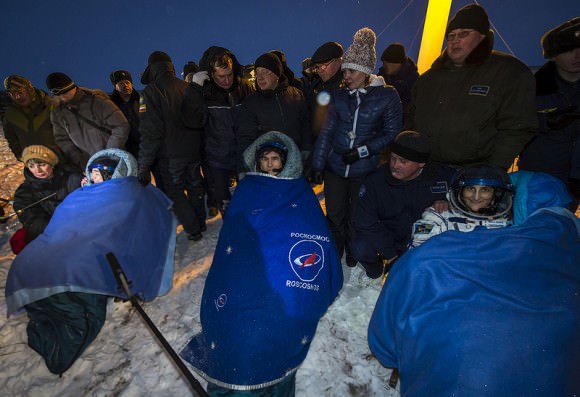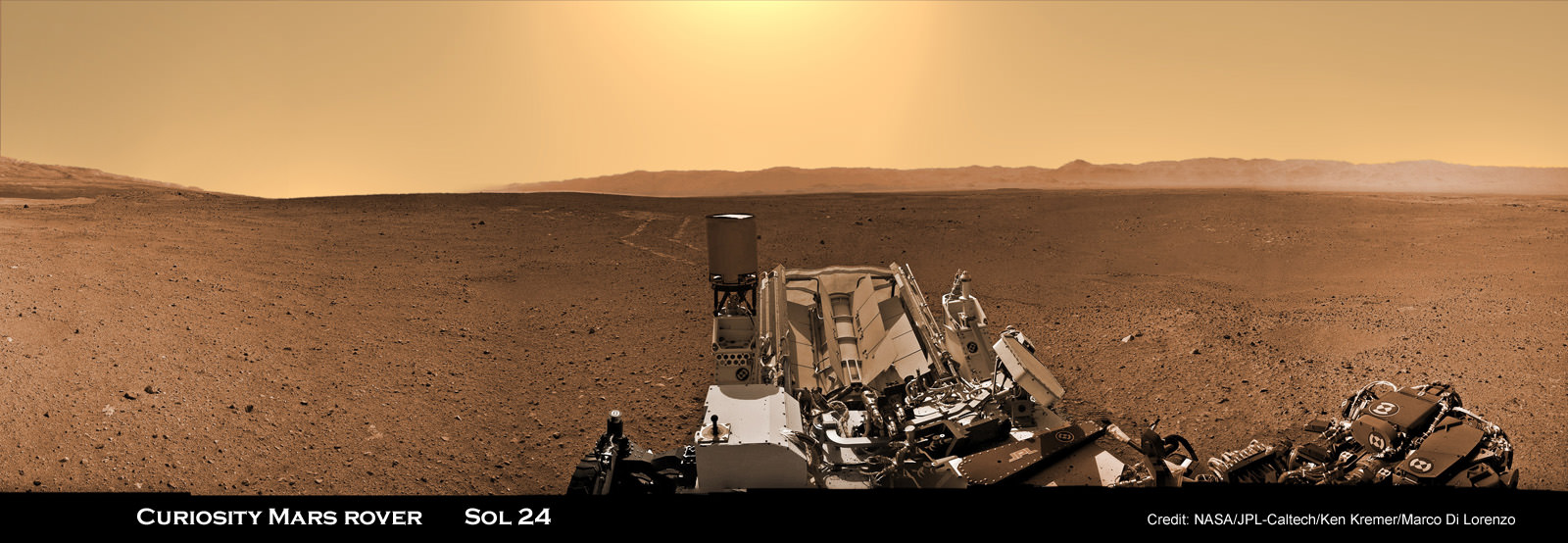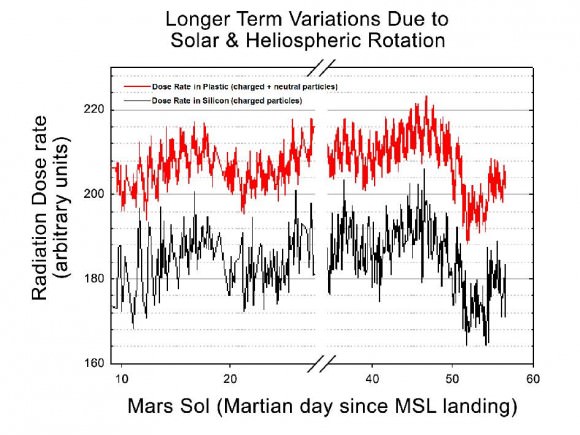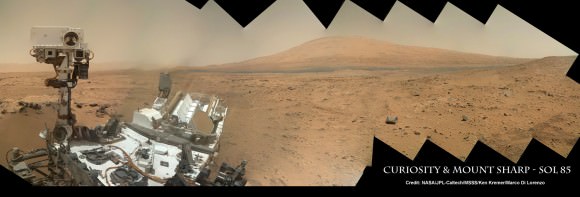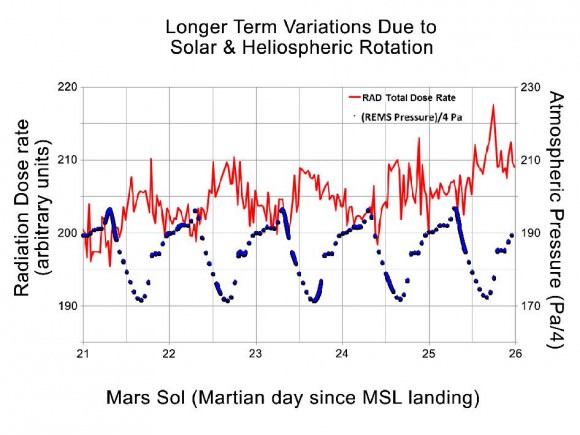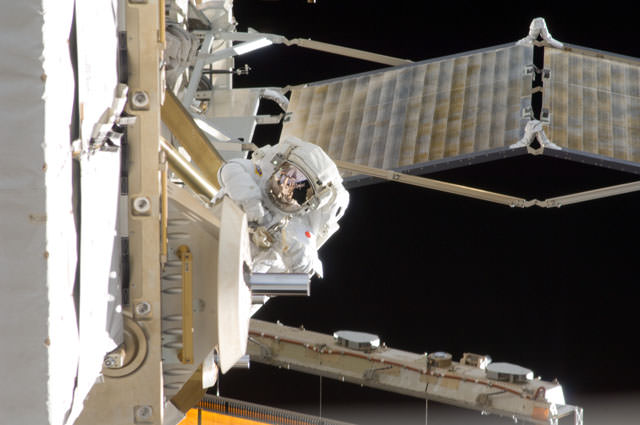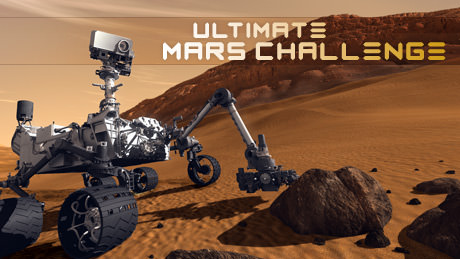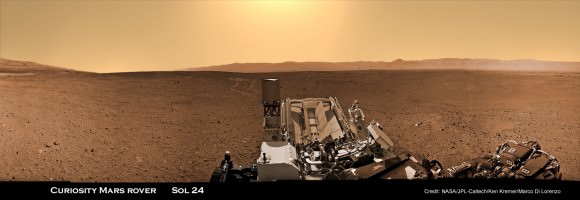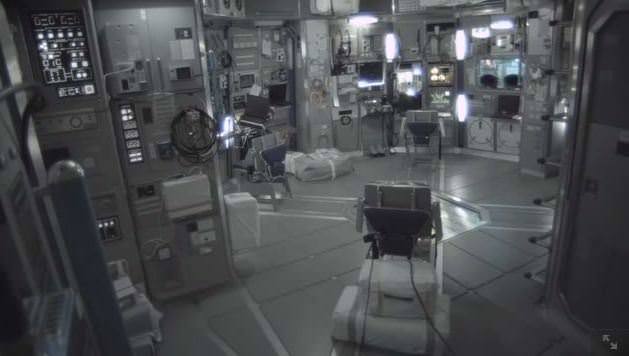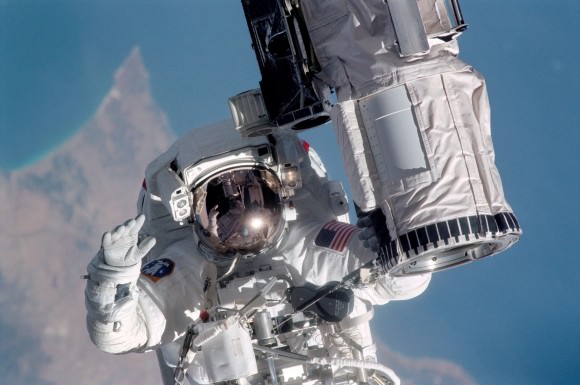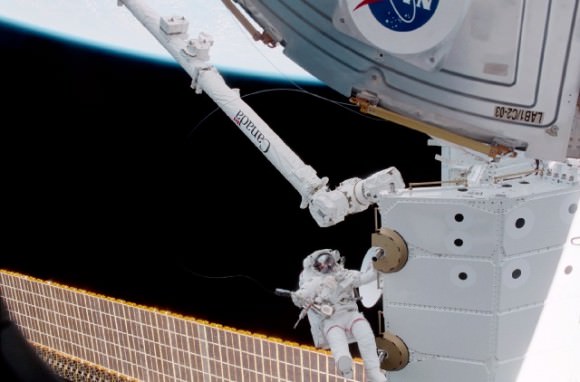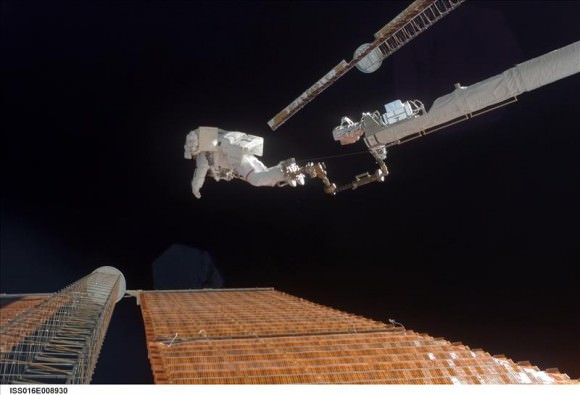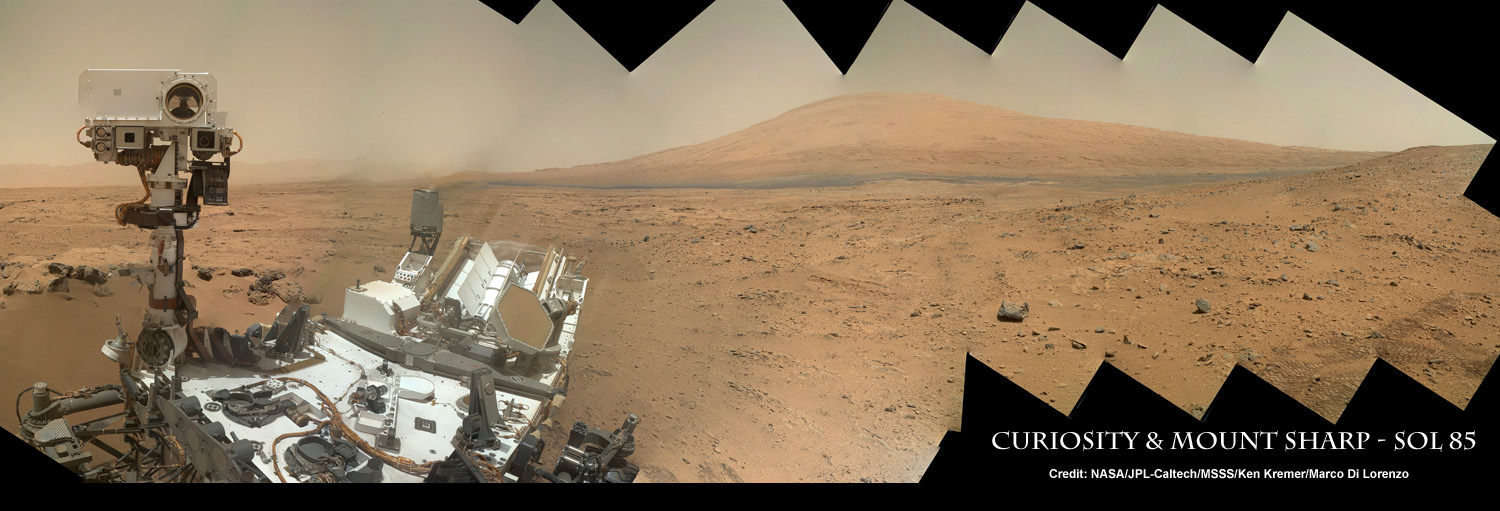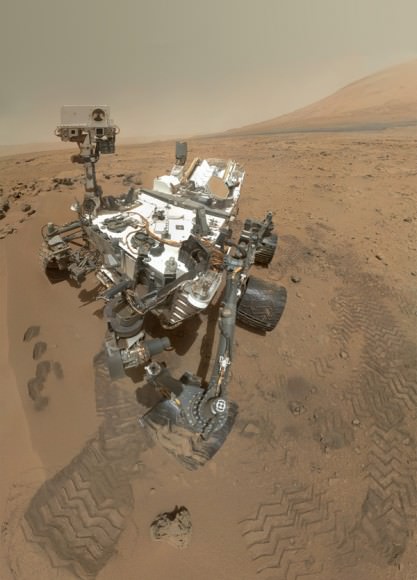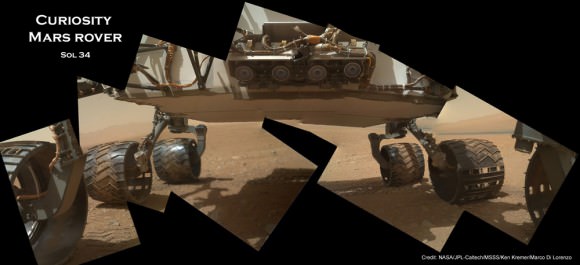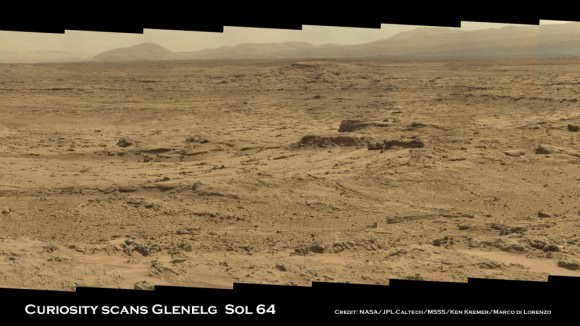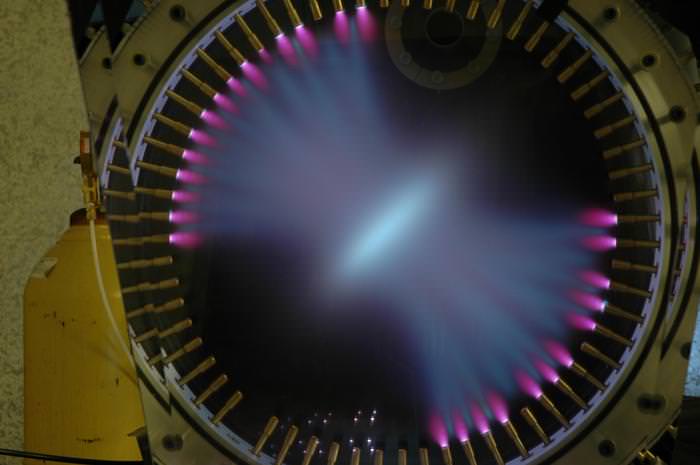Image caption: Curiosity scoops repeatedly into this Martian soil at windblown ripple dubbed ‘Rocknest’, shown in this mosaic, and delivered samples to the SAM chemistry instrument, on the robots deck, to search for any signatures of organic molecules – the building blocks of life. This color mosaic was stitched together from hi-res color images taken by the robots 34 mm Mastcam camera on Sols 93 and 74. Credit: NASA / JPL-Caltech / MSSS/Ken Kremer / Marco Di Lorenzo
Has Curiosity made a ‘Historic’ science discovery with the SAM (Sample Analysis at Mars) chemistry instrument that analyzes Martian soil (see mosaic above) and is designed to detect organic molecules – the building blocks of life? Has Curiosity unambiguously and directly detected the first signatures of organics on Mars ? Is an announcement imminent?
Speculation is rampant that NASA’s Curiosity Mars rover has made an earth-shaking discovery ‘for the history books’ , following a radio interview by NPR’s Joe Palca with the mission’s Principal Investigator, John Grotzinger, while sitting in his office at Caltech last week. NPR reported the story on Tuesday, Nov. 20.
“We’ve got a briefing on Monday [Dec 3] where we’ll discuss our results,” John Grotzinger told me.
Grotzinger will describe the SAM data and their potentially pivotal implications at the annual meeting of the AGU (American Geophysical Union) being held from Dec 3-7 in San Francisco. Many papers and results from the first three months of the Curiosity Mars Science Lab (MSL) mission will be presented at the AGU meeting.
“The science team is analyzing data from SAM’s soil inspection, but not ready to discuss yet,” JPL Press spokesman Guy Webster informed me today.
It’s the Thanksgiving holiday period here in the US so the answers will wait a tad longer.
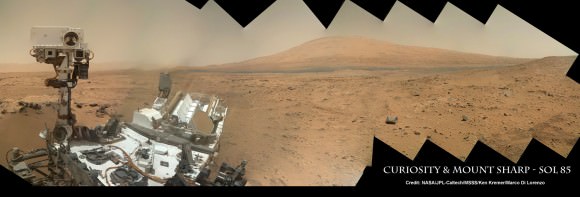
Image Caption: Curiosity Self Portrait with Mount Sharp at Rocknest ripple in Gale Crater. Curiosity used the Mars Hand Lens Imager (MAHLI) camera on the robotic arm to image herself and her target destination Mount Sharp in the background.SAM chemistry suite located on robot’s deck near Mast. To the left is the northern rim wall of Gale Crater. This color panoramic mosaic was assembled from raw images snapped on Sol 85 (Nov. 1, 2012). Credit: NASA/JPL-Caltech/MSSS/Ken Kremer/Marco Di Lorenzo
Curiosity had been collecting and analyzing Martian soil samples for more than a month at a windblown ripple called ‘Rocknest’. So far Curiosity has scooped into the Martian soil five times and delivered a single sample to SAM and two to the adjacent CheMin chemistry instrument.
“This data is gonna be one for the history books,” Grotzinger went on to say to NPR. “It’s looking really good.”
JPL Press spokesman Guy Webster advises caution and patience while damping down euphoria. He told me that the team is still trying to interpret and understand the analysis from SAM and seeking to clarify their meaning before making any premature conclusions.
“This is no change from the policy with past results from the mission, such as SAM’s atmosphere analysis or CheMin’s soil sample analysis: The scientists want to gain confidence in the findings before taking them outside of the science team,” Webster informed me.
“As for history books, the whole mission is for the history books. John was delighted about the quality and range of information coming in from SAM during the day a reporter happened to be sitting in John’s office last week. He has been similarly delighted by results at other points during the mission so far,” Webster said.
Organic molecules are the basis for life as we know it, and they have never before been discovered on the Red Planet’s surface. I am an organic chemist and to me the detection of organics on Mars would indeed be “Earth-shaking”. But just a finding of organics alone does NOT mean we discovered life. Organics are a prerequisite to life. Life requires finding much more complex molecules, like amino acids and far more beyond that.
Furthermore, finding signatures of organics so close to the surface might be a surprising result when one recalls that highly destructive ionizing radiation bombards the Martian topsoil 24/7.
So, it’s wise for the MSL team to be abundantly cautious and recheck their results multiple times. They wisely waited for further data before prematurely announcing the discovery of Martian methane. Initial SAM atmospheric measurements detecting methane turned out to be false – they actually originated from contamination by residual traces of Florida air trapped in the interior chambers of SAM and were carried all the way to Mars.
If organics are detected in the dusty dunes at Rocknest, the implications could be vast and potentially point to their widespread distribution across Gale crater and beyond.
As renowned astronomer Carl Sagan once said; ‘Extraordinary claims require extraordinary evidence.”
Stay tuned.
Learn more about Curiosity’s groundbreaking discoveries, SAM and NASA missions at my upcoming free public presentations:
-
- on Dec. 6 held at Brookdale Community College, Monmouth Museum, Lincroft, NJ at 8 PM – hosted by STAR astronomy
-
- and on Dec 11 held at Princeton University and the Amateur Astronomers Association of Princeton (AAAP) in Princeton, NJ at 8 PM.
…..
Dec 6: Free Public lecture titled “Atlantis, The Premature End of America’s Shuttle Program and What’s Beyond for NASA” including Curiosity, Orion, SpaceX and more by Ken Kremer at Brookdale Community College/Monmouth Museum and STAR Astronomy club in Lincroft, NJ at 8 PM
Dec 11: Free Public lecture titled “Curiosity and the Search for Life on Mars (in 3 D)” and more by Ken Kremer at Princeton University and the Amateur Astronomers Association of Princeton (AAAP) in Princeton, NJ at 8 PM.

